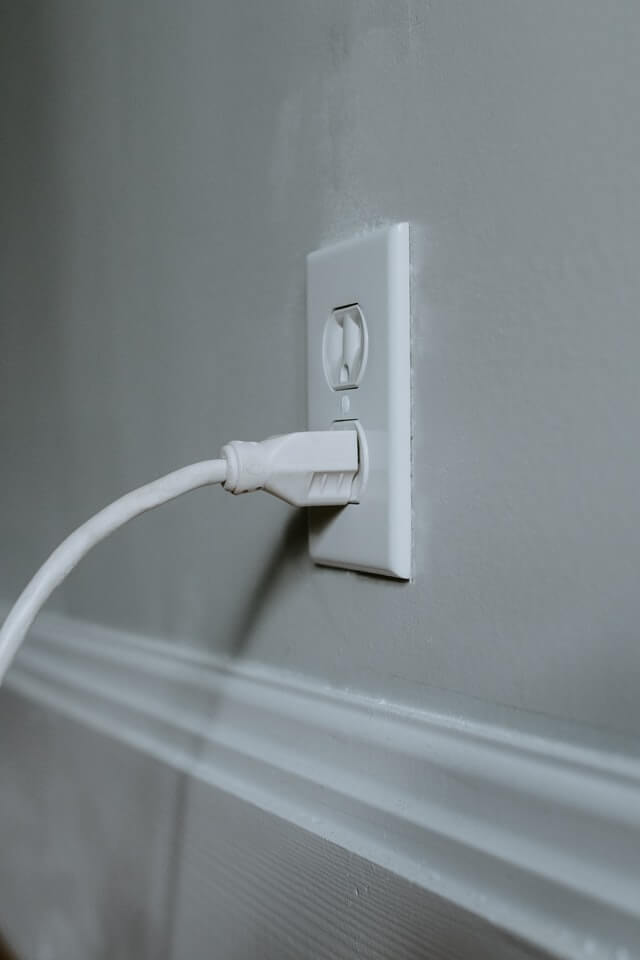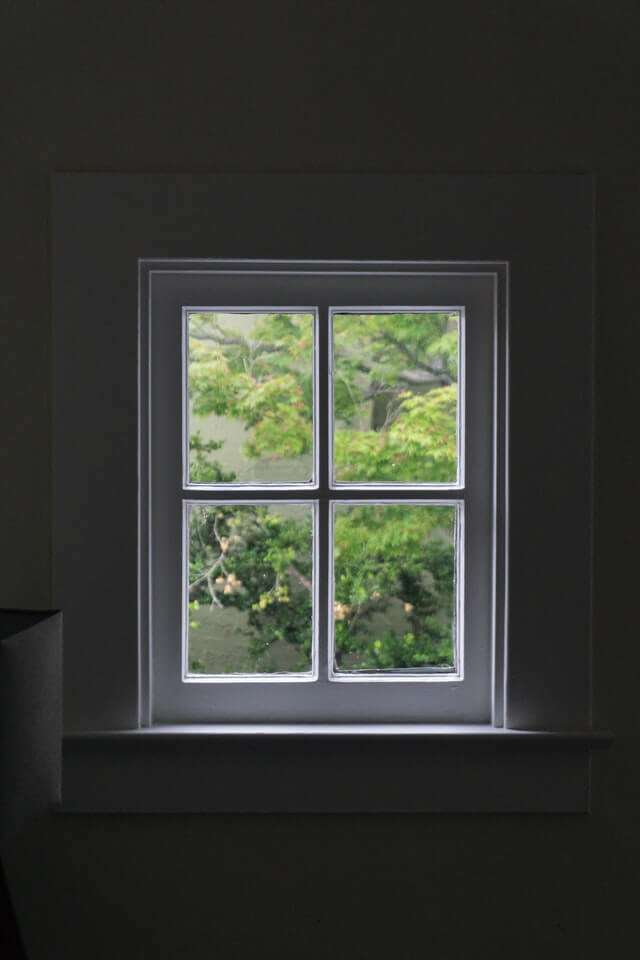How to Find a Stud in the Wall – 7 Simple Ways

Learning how to find a stud in the wall is very useful when you’re looking to hang something on the wall that holds a bit of weight and you don’t want it to potentially fall.
That said, finding a stud can sometimes prove difficult.
So, how do you find a stud in a wall?
How Far Apart are Studs?
The first thing you need to know is that most modern-day homes are framed with studs that make up windows, doors, walls and ceilings.
These studs, or in the slang, 2-by-4’s, are like the skeleton of a home and play an important part in holding the structure of the house firmly in place.
Drywall is then attached to the studs in order to create walls inside of the home and fashion room divisions.
Most commonly, studs are placed 16 inches apart from each other, with only some exceptions in older homes, in which the studs can be placed 24 inches apart.
So, if you happen to find a stud and measure from the very center, you can then know that 16 inches (24 inches in older homes) to either side, you will be able to find another stud.
This technique can then allow you to firmly hang heavy objects or hang objects that extend multiple feet like shelves, TV’s and cabinets.
The problem?
Well, finding a stud can be difficult because the wall doesn’t really let us see where the stud is located.
That is why in this article we have highlighted multiple ways for you to find a stud in the wall.
Let’s find out…
1. How to Use a Stud Finder
Although not the only way, the easiest and most efficient way to find a stud in the wall is by using a stud finder.
A stud finder, as its name implies, is a handheld tool that when placed on the wall, can find wooden studs.
Depending on the model, it can also show you on an LCD screen where the center of the stud is located.
Something very useful, because by finding the center of a stud and placing the nail or screw directly in the center, you can hang objects more precisely and with a better hold.
Without the potential of damaging the dry wall.
Some stud finders can even detect other materials hidden behind the wall, like metal studs, wiring and piping.
Here is How to Use a Stud Finder
1. Ensure the stud finder is calibrated before every scan.
2. Slowly move the stud finder along the wall without shaking it or making sudden movements.
Sudden movements can cause the tool to become uncalibrated and will not deliver an accurate reading.
3. When the signal bars are full and the beep goes off at its loudest, you have found the center of the object.
4. Mark the wall at the stud’s center point by using a pencil or a piece of painter’s tape.
How to Find a Stud without a Stud Finder
Finding a stud without a stud finder can sometimes prove to be a difficult task.
Specially if you don’t know what you’re looking for.
But not to worry!
There are several ways you can learn to find a stud in the wall without a stud finder.
2. Use an Electrical Outlet to Find a Stud in the Wall

Only with a few rare exceptions, electrical outlet boxes are attached to a stud on either side of the outlet.
This gives the outlet box support and makes the outlet sturdy.
The first thing you need to do us to find if the stud is on the right or left side of the outlet box.
Here is how to find a stud:
1. Although this can be done without turning off the power to the outlet, in order to avoid possible electrocution, it is best to turn off the breaker switch that delivers power to the specific outlet you are looking at.
2. Once the power is cut off, using a flathead screw driver, remove the outlet’s cover.
3. With the cover removed, first look to see if you are able to see the stud by just looking.
4. If the box is flush against the drywall most likely will not allow you to find it by just looking. If that is the case, you can use the “tap and listen” method (keep reading below to learn how) on either side of the outlet. Listening for a more solid sound vs. a hollow sound. A solid or more deep sound means that you have located a stud.
5. If you are still unsure of the location of the stud, you can insert a small nail into the wall on either side. Feeling for resistance when the nail hits the stud.
6. Once you’ve found the stud, measure ¾ of an inch in order to find the center of the stud and mark the location with a pencil or painter’s tape.
7. From there you can measure 16 or 24 inches to either side (depending on your home’s specs) and find the remaining studs on the wall.
3. Use the Window Frame to Find a Stud in the Wall

At the time of construction, your home’s windows have to be framed out of wooden studs in order to be sturdy and hold the window panes in place.
So, if you are trying to locate a stud near a window, you can use that to your advantage.
The studs are located on each side, top and bottom of the window.
However, finding the center of the stud can prove difficult since they may not be exactly flush to the edge, depending on the accuracy of the build.
1. To find the stud measure 3/4 of an inch from the edge of the window. This will give you an approximate center.
2. From there you can measure out using the 16 or 24 inch rule and find the additional studs on the wall.
4. Use a Magnet to Find a Stud in the Wall
Drywall makes up the majority of the walls in your home and it is attached to the studs or the frame of the home by using screws.
This can allow you to use a strong enough magnet to find those screws behind the wall, thus finding a stud.
In order words, find a screw = find a stud.
Here is how to use this simple hack.
1. With a strong enough magnet, run it across the wall. Feeling for any pull towards the wall. Do this until you feel it attach to the wall.
2. Once the magnet is attached to the wall, you have found a screw, and you can be certain that you have found a stud.
3. Mark the spot and measure out accordingly to find the additional studs on the wall.
5. Use a Smart Phone App to Find a Stud
Something that not a lot of people think about and although not a 100% accurate, there are a few smart phone apps that can help detect screws to which the drywall is attached to.
Similar to the above technique of using a magnet, smart phones have internal magnets that can be used by the application to alert you when it has encountered a metal.
Search for a “stud finder” app and give a it a try. Also, leave us a comment and let us know which app you tried and if it was successful in finding a stud for you.
6. Tap and Listen – The Knock Test

Since wooden studs are quite sturdy and flush behind the wall, when the wall is “knocked on,” at a place where there is a stud, the sound will be different.
It will be more of a “solid sound” versus a “hollow sound” where otherwise there isn’t stud.
To try this method, you can use your knuckles or a tool, like a hammer.
But when using a hammer, it is recommended to wrap the head with a rag or small towel, in order to prevent damage to the wall.
7. Use a Small Nail and Hammer to Find a Stud
We’ve saved this technique for last, because at the end of the day you don’t want to have a bunch of small holes in your wall.
Specially if all you’re doing is hanging a picture frame.
However, this last-ditch effort is very successful in finding wooden studs.
You can apply any of the above techniques first in order to give you a more accurate start before making a hole in your wall.
Here is how:
1. Using a small finish nail, hammer it at a place where you suspect there is a stud.
Once the nail is past the drywall you will either feel no resistance at all, to the point that you can drive the nail all the way in with just your fingers. This means no stud.
Or you will feel a lot of resistance. To the point that it would be impossible for you to drive the nail any further. This means that you have found a stud.
2. Continue to drive the nail into the wall leaving about an inch separation between attempts until you are able to find a stud.
3. Once you have found the stud, mark the spot and measure out accordingly at the desired hanging spot.
We hope these tips helped you learn how to find a stud in the wall. We’d love to hear from you if you have any questions or comments.
Related Articles
7 Cheap Ways to Increase Your Home Value
Looking to add value to your home without breaking the bank? Check out our affordable DIY home improvement tips for a higher resale value.
How to Unclog a Toilet without a Plunger
A clogged toilet can be quite an annoying situation; specially if you don’t have a plunger. These are common household items you can use to unclog a toilet without a plunger.
How to Unclog a Shower Drain: 5 Easy Ways.
Learn how to unclog a shower drain with these 5 easy tips. Try these before you call an expensive plumber!
This is Property Management by You!
Are you ready to take control? Check out our software features.
About our company
We are a property management software company inspired by the need to serve rental property owners and managers, with a better, easy-to-use and more affordable way of managing their properties.
© 2025 ALL RIGHTS RESERVED BY PROPERTYCTRL.COM





0 Comments